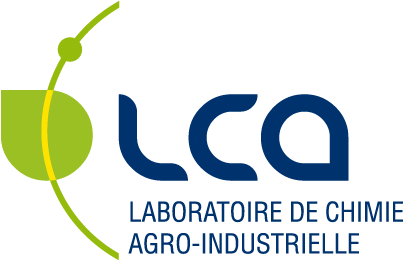Development of an eco-fractionation process for Ricinodendron heudelotii oil to obtain α-eleostearic acid and β-eleostearic acid
Résumé
The present article studies the transformations and fractionation of the reserve lipids of Ricinodendron heudelotii . The native triglycerides of this oil are composed mainly of conjugated polyunsaturated fatty acids, in particular α-eleostearic acid C18:3 n– 5 (9c, 11t, 13t) at 60%. This particular fatty acid of CLnA family exerts many activities potentially beneficial for health: anti-inflammatory, anti-leukemic, anti-microbial, anti-tumor, anti-ulcer and anti-diabetic. A process for transforming this acid into its isomers β-eleostearic acid and catalpic acid was explored with the aim of obtaining fractions enriched in β-eleostearic acid C18:3 n– 5 (9t, 11t, 13t). The β-eleostearic acid is a fatty acid of great interest because it is even more reactive and more efficient as antioxidant than α-eleostearic acid due to its higher trans content. Isomerization reaction of α-eleostearic acid in oil was carried out using artificial solar radiation treatment. The enrichment of concentrates in β-eleostearic acid was therefore tested using an eco-fractionation process. This process was carried out in two stages. The first step was the Candida rugosa lipase-catalyzed hydrolysis of triglycerides from native or isomerized Ricinodendron heudelotii oil. The second step was fractionation of the reaction medium obtained after hydrolysis. Triglyceride hydrolysis was complete, with a yield of free fatty acids of over 95% after 2 h of reaction. Treatment of the reaction media yielded 3 lipid concentrates with new chemical compositions of polyunsaturated fatty acids: a first concentrate, derived from hydrolysis of the native oil, composed of 60% α-eleostearic acid and 22% linoleic acid, and two other concentrates derived from fractionation of the hydrolysate of the oil isomerized by radiation. One was composed of 34% linoleic acid, 21% β-eleostearic acid, 11% α-eleostearic acid and 6% catalpic acid, and the last concentrate was composed of over 80% β-eleostearic acid. In addition to offering nutritional benefits similar to those of α-eleostearic acid, β-eleostearic acid also offers an interesting physical property: a very high melting point of 72 °C. Such a polyunsaturated fatty acid, which is solid at room temperature, could prove to be a raw material of choice, particularly in the world of food formulation, where manufacturers are looking for replacements with physical properties close to those of palm oil (the melting point of palmitic acid is 62 °C). Ricinodendron heudelotii oil has thus demonstrated its major role as a source of the triptych of α-eleostearic, β-eleostearic and linoleic fatty acids.
Domaines
Chimie| Origine | Fichiers produits par l'(les) auteur(s) |
|---|

